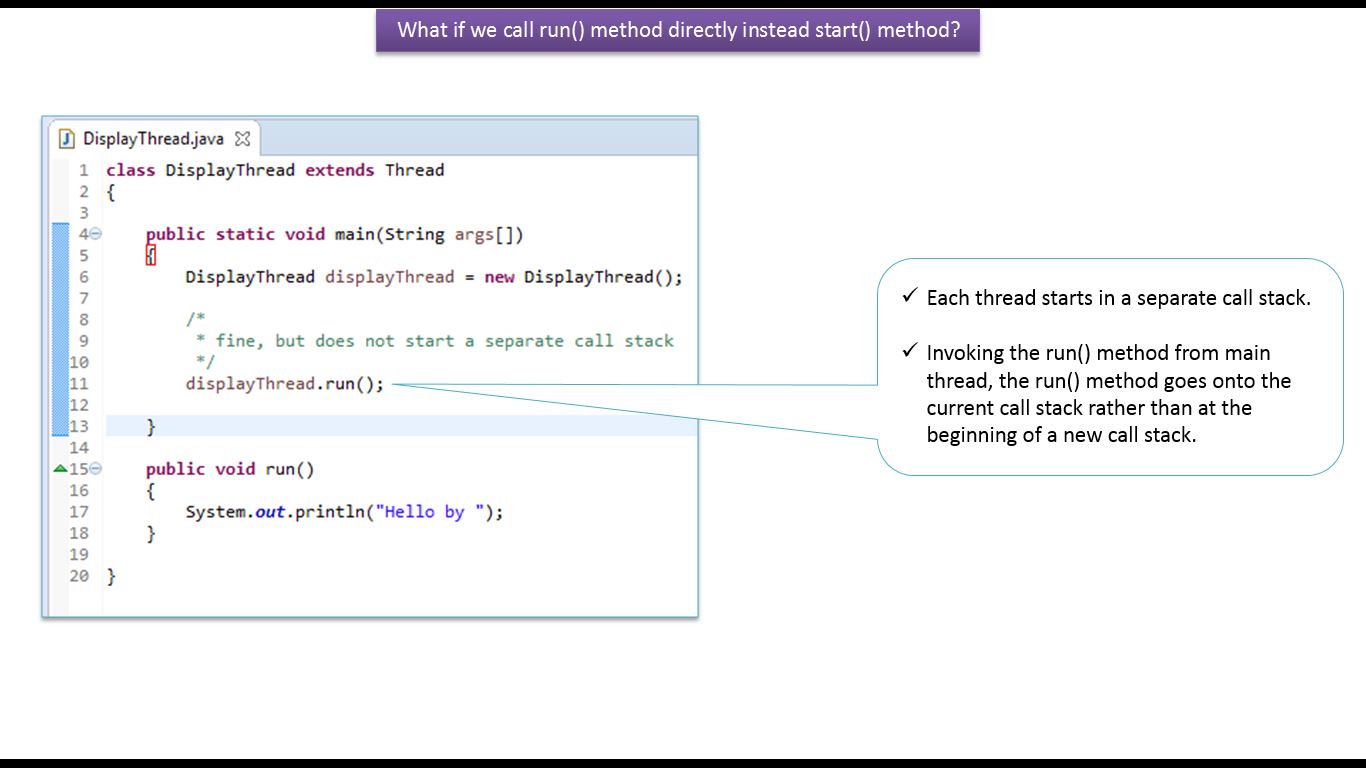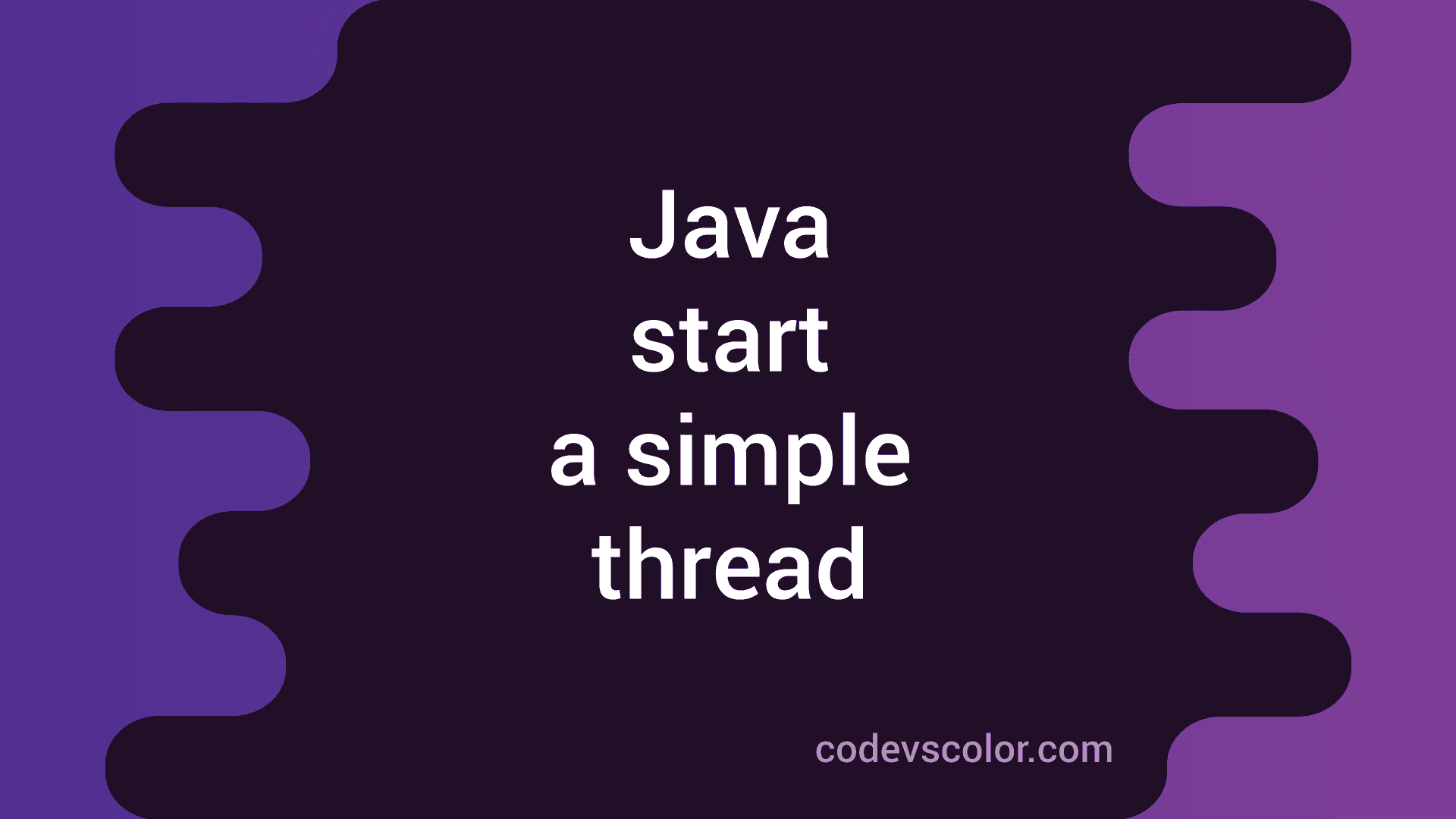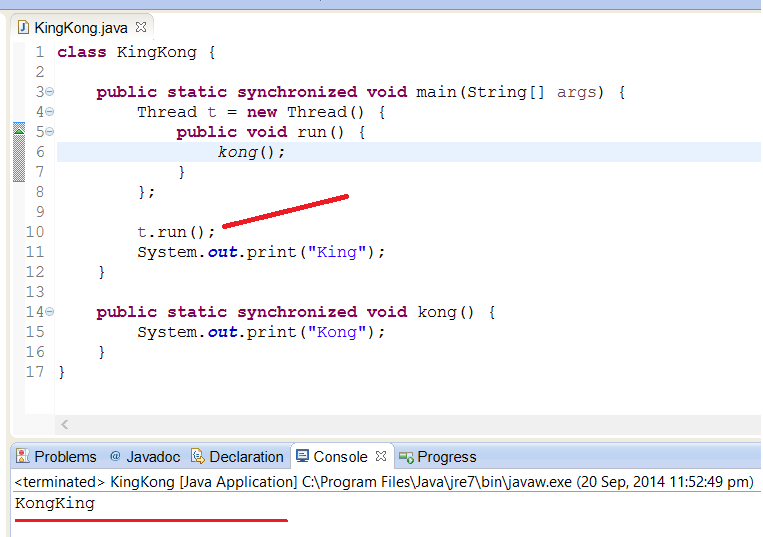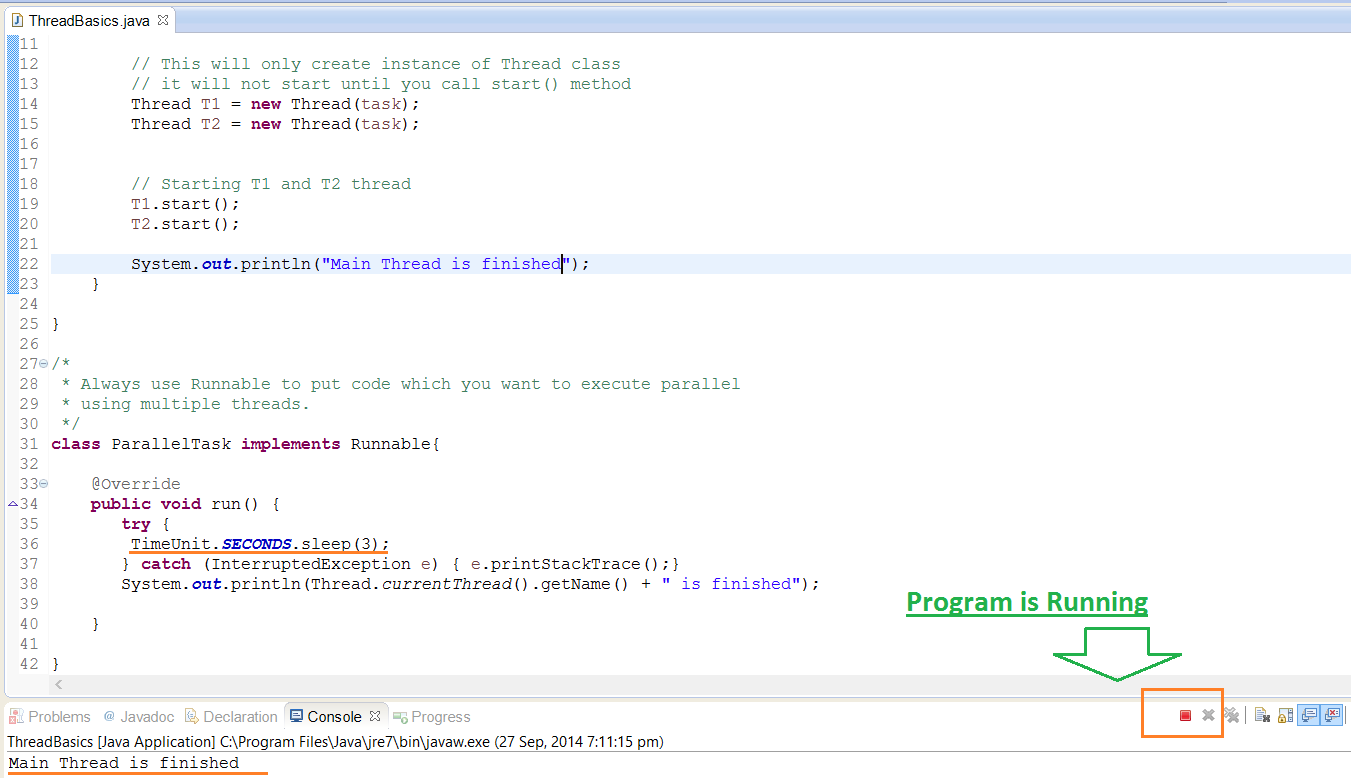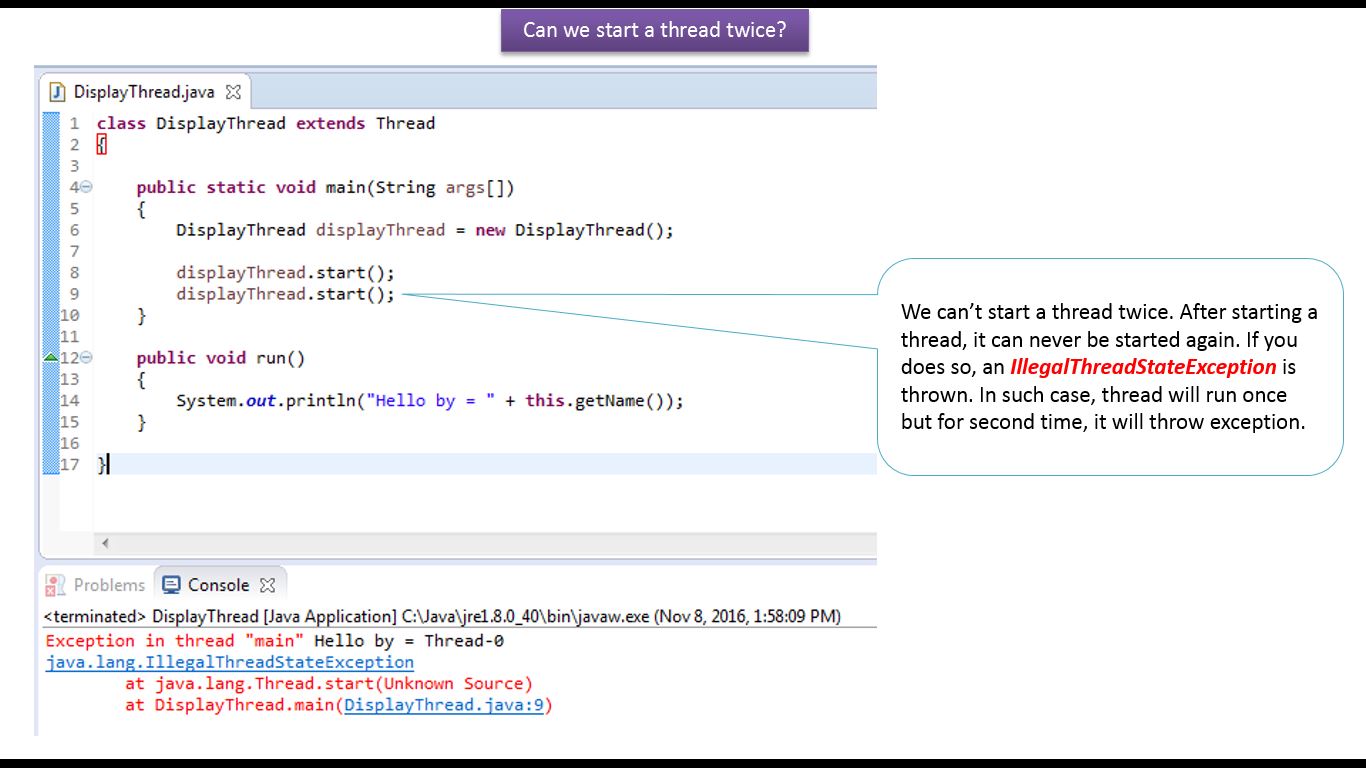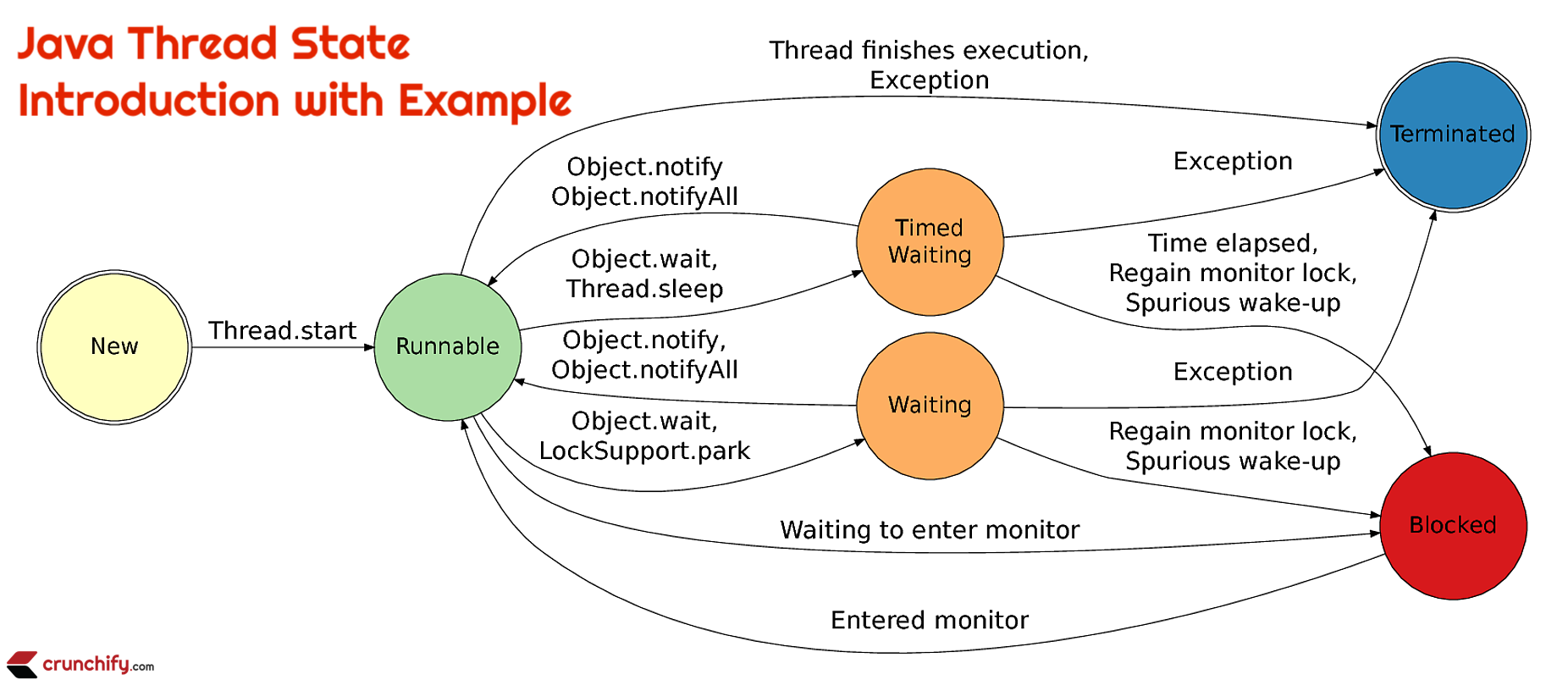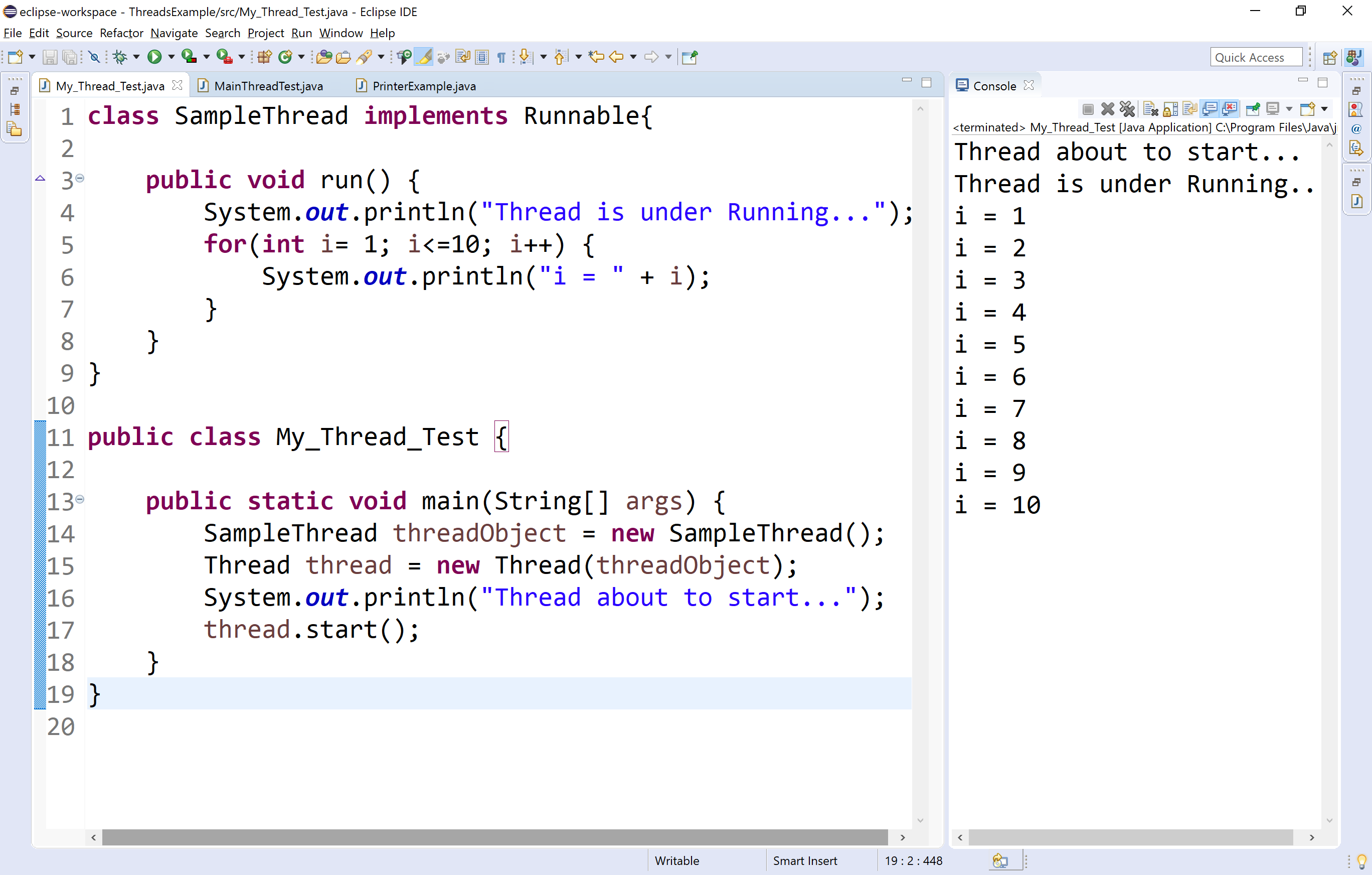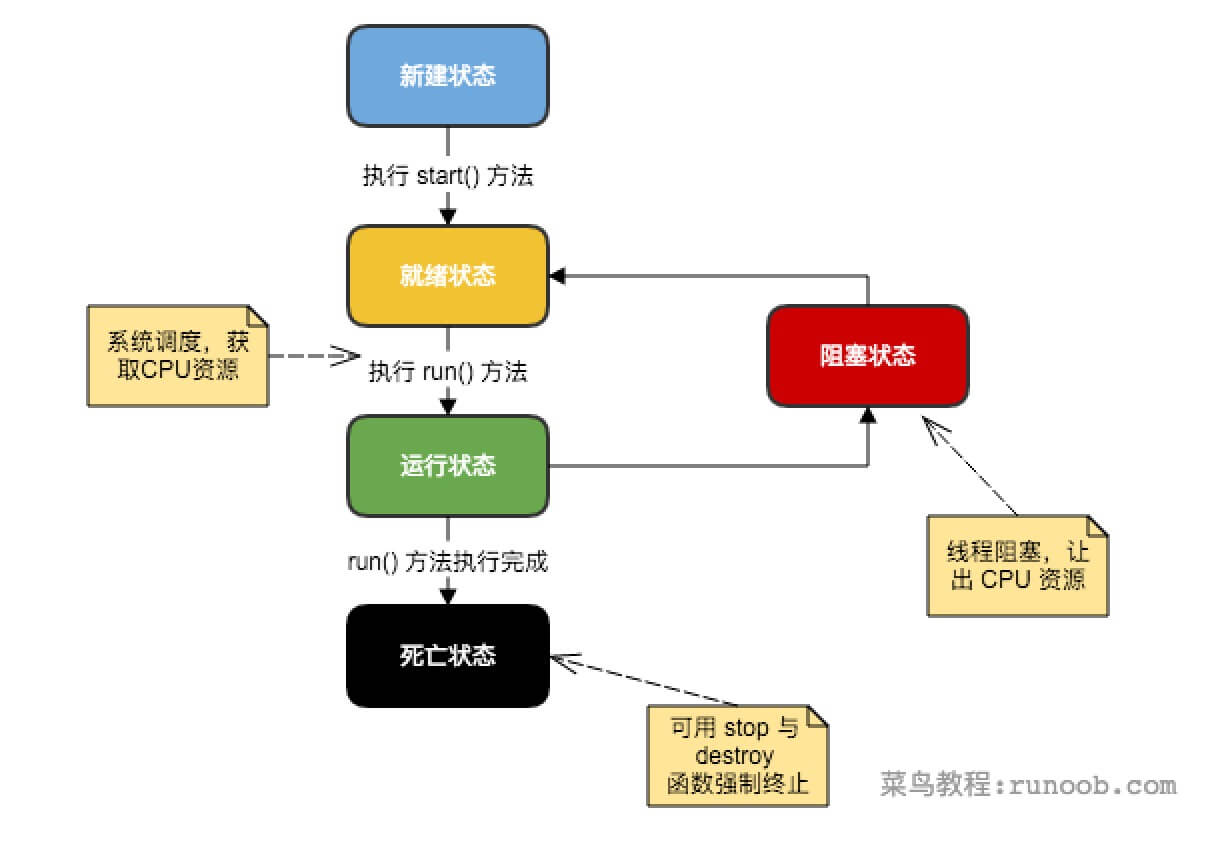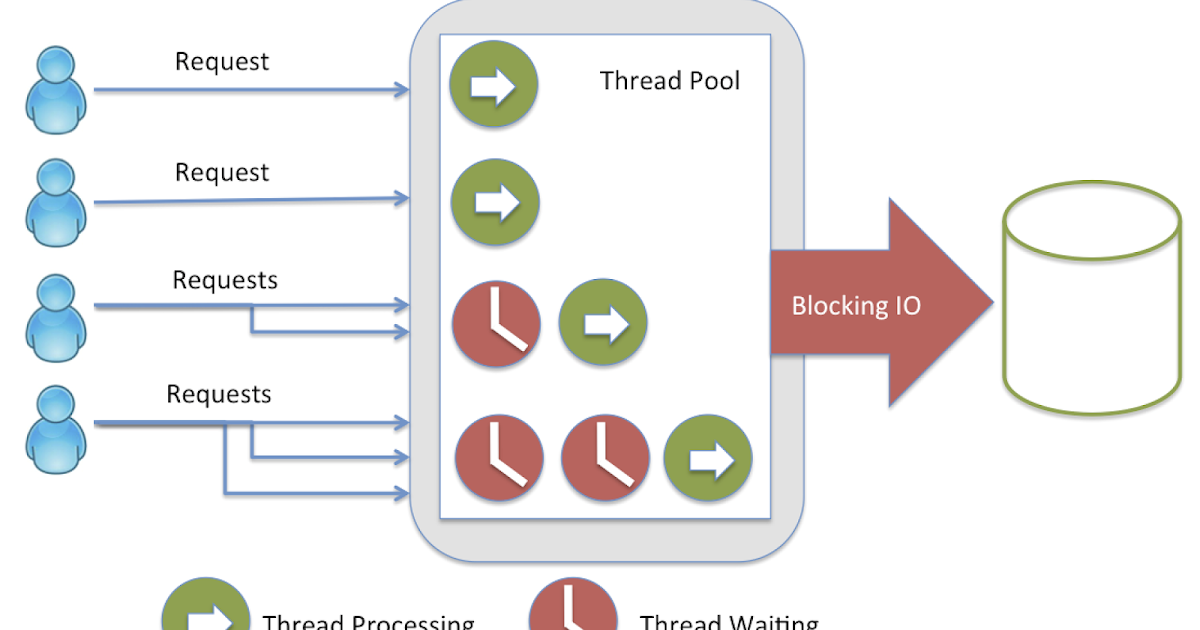Amazing Info About How To Start A Thread In Java
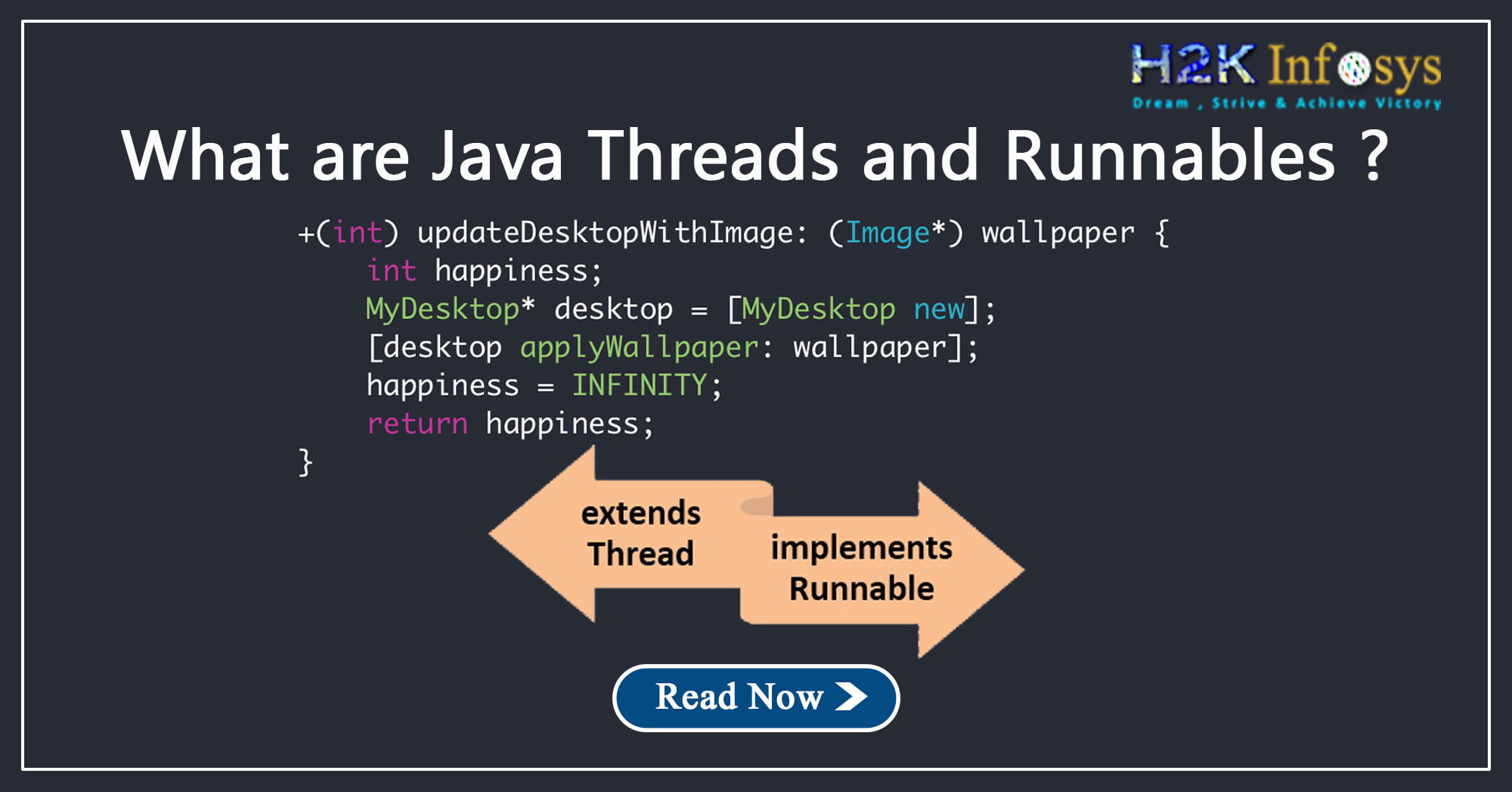
We can create threads in java using the following extending the thread class implementing the runnable interface implementing the callable interface by using.
How to start a thread in java. It performs the following tasks: A new thread starts(with new callstack). Thread mythread = new thread (myrunnable);
The start () method of thread class is used to begin the execution of thread. Constructors of the thread class. // important, otherwise jvm does.
There are two ways to create a thread. Myrunnable myrunnable = new myrunnable (); Primethread p = new primethread (143);
To start the java thread you will call its start () method, like this: To create a new thread in java, we can use either the thread class or the runnable interface. It calls the run () method defined in your thread class or runnable object.
Just create a new thread instance):. Invoking run () directly will not. The springapplication.run () method is a crucial part of spring boot applications, responsible for bootstrapping and launching the spring application.
Extend syntax get your own java server public class main. So it runs for a particular amount of. We should call the start() method on threads in the new state (the equivalent of.
New state by default, a thread will be in a new state, in this state, code has not yet been run and the execution process is not yet initiated. The currently running part of the program can start another thread that. Java provides two ways to create a thread programmatically.
Create a thread by extending the thread. In java, we can create a thread in following ways: Thread thread = new thread();
Start tells the jvm to do the magic. Thread () the thread () constructor creates a new thread object. It can be created by extending the thread class and overriding its run () method:
By extending the thread class; However, if you use this constructor, the thread does not. The start() method of thread class is used to start a newly created thread.
